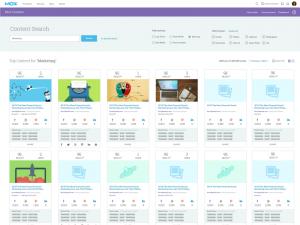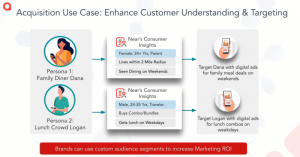
Onsite search deployed on eCommerce sites is one of the top three most effective ways for buyers to find the products they want to purchase. So why is it that 7 in 10 adults that shops online at least monthly, have come to the conclusion that onsite search functionality deployed on most webstores they visit don’t deliver relevant results and expectations. I didn’t realize how poor the implementation of onsite search was for eCommerce sites until I decided to write this blog article.
To test the “State of Search” in 2016, I submitted a simple search query “men’s red tennis shoes” on randomly chosen sites focused on selling shoes or branded retail sites that sold shoes. I only considered the first 10 results returned from the search query and this is what I discovered.
Nikes.com – returned five red tennis shoes for men – relevant results for the search terms entered (onsite search platform=Not available).
Zappos.com – returned four men’s red tennis shoes – as requested; that represented the entire inventory available on the day this search query was submitted (onsite search platform=SOLR).
Shoes.com – four of the seven returned items were men’s red tennis shoes, the rest were non-red tennis shoes (onsite search platform=Nextopia).
DSW.com – two of the ten returned items were men’s red tennis shoes, the rest were non-red men’s tennis shoes (onsite search platform=Endeca).
Sears.com – three red tennis shoes for men were returned; the rest were non-white tennis shoes or men’s work boots (onsite search platform=BloomReach).
JCPennys.com – returned only two shoes of the first ten results displayed; only one was a men’s tennis shoe and it was not red (onsite search platform=Endeca).
HSN.com – no tennis shoes were returned but the results included toilet sprays, bracelets and watches – nothing close to the search terms input in the search box (onsite search platform=BloomReach).
AS A WORD OF CAUTION, search results conducted on a Monday afternoon may and probably will be different, perhaps dramatically different, then the results returned on Thursday morning based on product availability, sales promotions, what inventory the merchant wants to turn over, and other important factors. So please keep this in mind if you go to these sites and conduct the same search terms used for this article. Your results will likely be different than what I found on February 3 2016.
The Builtwith profile tool was used to determine which search platform is being used by the webstores listed above. In defense of the search vendors mentioned in this article, poor search results should not necessarily be contributed to the search platform itself but can be the result of a poor search implementation by the customer or business partner or the site is not consistently being updated with product refreshes or indexing of the data dictionary.
Only Nike and Zappos got it right, followed by Shoes.com and DSW placed a distant third. The rest of the sites tested failed to meet basic expectations. This is just one example as to why online conversion rates under perform for many webstores; they can’t execute a simple search query and return relevant results the buyer had asked for. Shoppers can’t buy a product if they can’t find what they are looking for, and are less inclined to take the time to view product listings below the fold or not found on the first page. That is why the first 10 – 12 search results returned are so important.
So how can the user experience come closer to achieving a shopper’s expectations?
CLEARLY LABEL THE SEARCH BOX ON EACH PAGE OF YOUR SITE. Standard location for a search box is at the top of page, on the right side above the main navigation bar. Make sure the search box is big enough for typical queries for this site; you don’t want the text to disappear from the search box as the user inputs their search terms; creates frustration for the buyer.
IMPLEMENT THE AUTOCOMPLETE/AUTOSUGGEST SEARCH FEATURE. Offer search suggestions or product listings once the user enters a few characters into the search box. This will boost search conversion rates when users rely on the autosuggest and autocorrect search features to know the correct spelling of product keywords to use – preventing a no results page from occurring. An onsite search feature that provides relevant search results and is easy to navigate provides a compelling user experience that will increase the number of repeat customers to make additional purchases. For mobile users, autosuggest is a must since this limits the typing required to reduce spelling errors which translates to less failed searches and missed sales opportunities. Zero search results lead to zero sales.
IMPLEMENT SYNONYMS FOR MISSPELLINGS TO PREVENT FAILED SEARCHES. Implement synonyms into your site search solution to autocorrect for misspellings or as suggestions for product keywords. Synonyms should be deployed on as many keywords as possible since there are many terms that represent the same product (e.g., tennis shoes can mean sneakers, walking, training and running shoes). Always have an effective informational page to handle search results that returns no matching results, since that equates to a poor user experience – leading the consumer to a dead-end and an invitation to your competitor’s site.
WHEN A SITE SEARCH RETURNS NO MATCHING RESULTS. Make sure you have an informational page returned to the user when zero results are returned that displays one of the following: (i) display best sellers for the category chosen; (ii) products that contain the keyword(s) in the product title relevant to the category selected; (iii) the search query should accept variants of keyword combinations and reply back with “did you mean wood chairs” for the user specified keyword “woodchairs” or “wood-chairs” or “wood chair”; (iv) if the item is not available, at the very minimum display the essentials (contact information, product categories, a store finder, search tips and chat support).
ALLOW USERS TO CHOOSE THE WAY SEARCH RESULTS ARE DISPLAYED. Give the shopper the ability to choose how they review results based on brands, best sellers, coming soon, fabric, new arrivals, price, ratings, etc. Provide them the ability to return what is important for them to see first and improve the customer journey at the same time.
RELEVANT SEARCH RESULTS ARE POSTED FIRST. What search results are displayed at the top of the page versus what is displayed below the fold will always influence the user experience — regardless of screen size. The average difference in how users treat information above the fold versus below the fold is 84%. This is where most onsite search engines fail – they don’t prioritize and display the most relevant search results first based on rules specified by the user (brand, color, fabric, price) or the merchant (most profitable, best-selling, excess inventory). When too much information is returned, this forces a shopper to scroll below the fold or to the second page of search results – creating indecision when too many options are presented. Triggering a buyer to use their mouse or place their finger on a touch screen device one more time, is guaranteed to lose sales and allows the shopper to shift their attention elsewhere.
MOBILE SEARCH MUST BE USER FRIENDLY. 6 of 10 Internet users access online content through their mobile devices and mobile purchases drive one-third of all U.S. eCommerce sales. Armed with this knowledge, merchants need to make their onsite search fast for mobile shoppers, since that will allow shoppers to be more engaged, view more pages and come back more frequently to purchase more products.
IMPLEMENT MULTI-FACETED PRODUCT FILTERING CAPABILITIES. Survey after survey has clearly shown an advanced site search capability is consistently the best option to convert a shopper-to-a-buyer. Users who type a search phrase are more likely to convert with a higher AOV versus a shopper who browses – one who navigates the site manually. A comprehensive set of search filters (brand, color, fabric, price, size) helps refine a product search and place the least amount of products in front of the buyer in the fewest clicks possible; fewer options makes a purchase decision easier to reach.
USE CATEGORIES TO LIMIT SEARCH RESULTS RETURNED JUST FOR THAT CATEGORY? For a site that has numerous products listed under each category, having the ability to select a category first, then select product keywords for that category is a pretty efficient way of showing category products that allows a shopper to find what they’re looking for very quickly.
USE SEARCH ANALYTICS TO DRIVE SALES. There are many uses that onsite search metrics can be used for to provide valuable insight on improving the customer journey and flow more revenue into the company coffer. Frequently used keywords specified in the site search box can be worked into your sites’ content to drive higher product page listings, thus driving more traffic to your site. Search analytics can also answer the following questions which will help you fine tune your site search with refinement options to be more in-line with current user behaviors: (i) what are the top search terms; (ii) which keywords return zero results; (iii) which keywords can synonyms be associated with to prevent a zero results page; (iv) which search terms have the highest conversion rates; (v) what is the AOV for shoppers that purchased through site search.
Merchants are more cognizant today of the benefits that technology can bring to their business. Feedback from consumers are telling companies about their onsite search weaknesses and merchants are beginning to make strategic investments in site search technology to address these concerns and differentiate themselves with a more positive experience for their customers.
If you are looking to make an investment in site search technology, find a site search service provider that can offer a Pilot Program or Proof Of Concept before you commit yourself to a longer engagement. There are plenty of quality site search vendors out there. If they don’t want to share the risks of proving their sales pitch to you, there are others that are willing to share the risks with you.
Is your onsite search under-performing? Are you considering a different onsite search solution? Need help evaluating a cost effective solutions? We would be happy to hold a more in-depth conversation with you on this or related topic. Please allow NetSphere Strategies to help guide you along this process.
Digital & Social Articles on Business 2 Community(62)
Report Post






